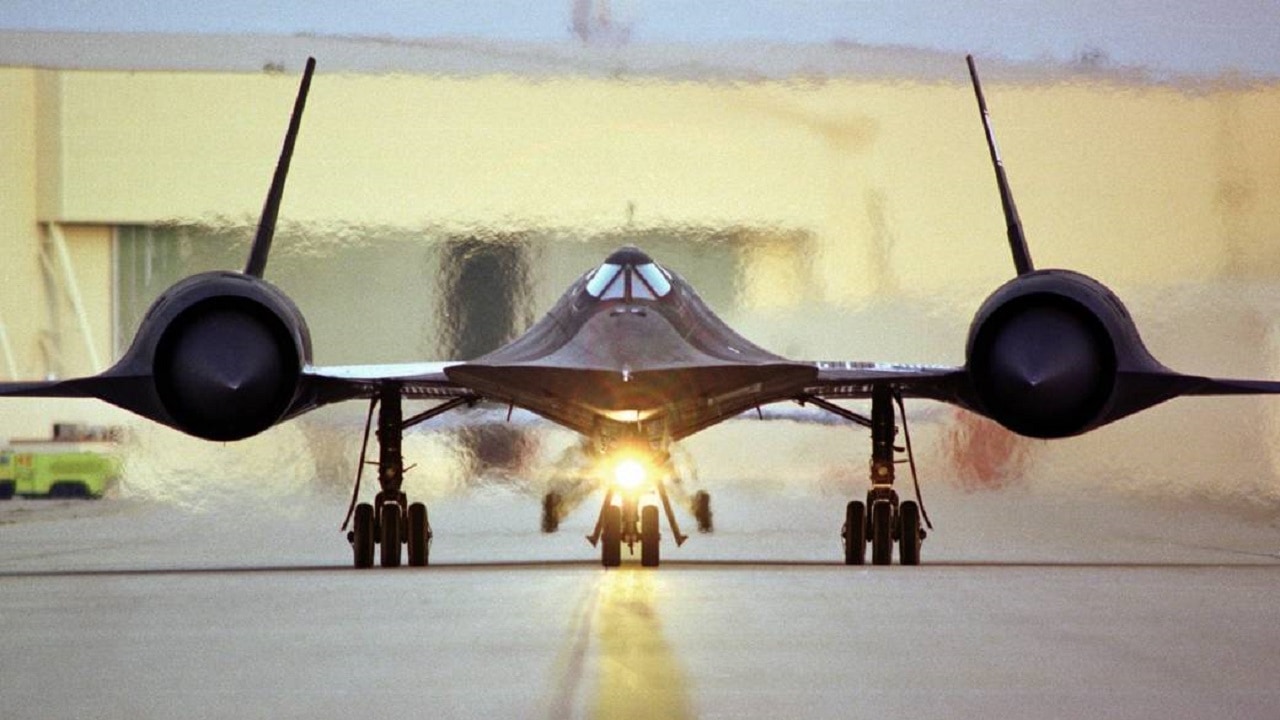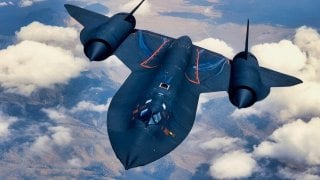The SR-71 Blackbird Could Fly at 2,193 Miles Per Hour (It Broke Records)
In July 1976, an SR-71 even set two world records – one was an absolute speed record of 2,193.167 mph while the other was an absolute altitude record of 85,068.997 feet.
No SR-71 Blackbirds Were Ever Shot Down – And Other Amazing Facts You Didn't Know: Of the thirty-two Lockheed SR-71 "Blackbirds" that were built during the Cold War, tragically, a dozen were lost in accidents, but not a single one to enemy actions.
As of 2022, the SR-71 holds the world record it set in 1976 as the fastest air-breathing manned aircraft, previously held by the related Lockheed YF-12.
Here are some other facts that most don't know about the high-flying, super-fast aircraft:
1) An old April Fool's Day joke still makes the rounds that Russia may have shot one day. The fact is that all of the aircraft produced are accounted for should dispel any rumors that one was lost, but back in 2018, the aviation news site Hush-Kit ran a story that the Russian Ministry of Defense shared evidence that an SR-71 spy plane was shot down over the Soviet Union during the Cold War, and suggested there was a U.S. Department of Defense cover-up. Savvy readers will note the story ran on April 1, but the "news" story is still used as "proof" that an SR-71 was shot down.
2) The SR-71 could fly at roughly 36.55 miles per minute or 3,216.4 feet per second; it was faster than a bullet fired from the World War II-era M1 Garand rifle – which had a muzzle velocity of 2,800 feet per second. We could argue that could make the SR-71 as fast as Super Man, yet so far, the Man of Steel has never raced the Blackbird. We'd be on the airplane.
3) Though not a single Blackbird was ever shot down by an enemy, SR-71 pilots couldn't sit back and relax. Flying at high speed isn't for the faint of heart. In addition, pilots had evaded (and outrun) some 4,000 missiles that were fired at it.
4) Only one aircraft even has the distinction of achieving a radar lock on the fast-flying United States Air Force reconnaissance plane. It wasn't a Soviet interceptor such as the MiG-25, however, but rather the Swedish-made Saab J37 Viggen fighter that was successful in achieving a missile lock and visual contact with the speedy spy plane.
5) The first time an SR-71 Blackbird was shot at by a missile occurred on July 26, 1968, during a reconnaissance flight over North Vietnam. Though the SR-71 carried radar countermeasures to evade interception efforts, its greatest protection was still its combination of high altitude and very high speed, which made it almost (but not entirely) invulnerable. Along with its low radar cross-section, those qualities gave a concise time for an enemy surface-to-air missile (SAM) site to acquire and track the aircraft on radar.
6) While it was a Saab J37 Viggen that was the only aircraft to achieve a radar lock on the SR-71, a pair of the Swedish fighter also escorted a damaged SR-71 after one of its Pratt & Whitney J58-1 afterburning turbofan engines lost power. The Swedes proved to be guardian angels for the SR-71 and ensured that no opportunistic Soviet fighter pilot would try to harass the spy plane.
7) Developed at Lockheed's not-so-secret "Skunk Works" facility, the SR-71 was designed to minimize its radar cross-section, an early attempt at stealth design.
It may be known as the "Blackbird," but it was actually painted a very dark blue that appears black. This was to increase the emission of internal heat and also to act as camouflage against the night sky.

8) It was made with Soviet titanium. During the Cold War, the United States didn't have any significant sources of metal, nor did any U.S. allies. As a result, the titanium used in the aircraft ended up being sourced from the same nation the aircraft was designed to spy on – namely, the Soviet Union! The raw materials were bought from third-world countries using fake companies set up by the Central Intelligence Agency (CIA).
9) It also wasn't an easy plane to operate. Unlike most modern combat aircraft, which could be "scrambled" and in the air within minutes, the SR-71 was more like a space launch of the era. Getting the Blackbird into the sky took hours of preparation and a large team to ensure everything was in order.

10) The SR-71 didn't use standard aviation fuel but rather a special military specification fuel called MIL-T 38219, or Jet Propellant 7. Shell Oil was actually called upon to invent a compound blend to meet the military's requirements, and the result was three times as expensive as the type of fuel used by airliners of the era.
11) In addition, the aircraft couldn't be fully fueled up on the ground. This is because the titanium fuselage panels were also loosely fitted to the aircraft's frame to allow for heat expansion, while the fuel system was also not sealed because there were no seals that were flexible and durable enough to deal with the kind of temperatures and shrinking-expansion cycles. As a result, the plane would leak fuel while on the runway, but it would stop leaking once the aircraft came up to temperature! The SR-71 had to be refueled right after takeoff.

12) It was indeed the U.S. military's eye in the sky, as the Blackbird could cross continents in just a few hours, and at 80,000 feet, the Blackbird could survey 100,000 square miles of the ground below per hour.
In July 1976, an SR-71 even set two world records – one was an absolute speed record of 2,193.167 mph while the other was an absolute altitude record of 85,068.997 feet.
Expert Biography
Peter Suciu is a Michigan-based writer who has contributed to more than four dozen magazines, newspapers, and websites with over 3,000 published pieces over a twenty-year career in journalism. He regularly writes about military hardware, firearms history, cybersecurity, and international affairs. Peter is also a Contributing Writer for Forbes. You can follow him on Twitter: @PeterSuciu.
All images are Creative Commons or Shutterstock.


